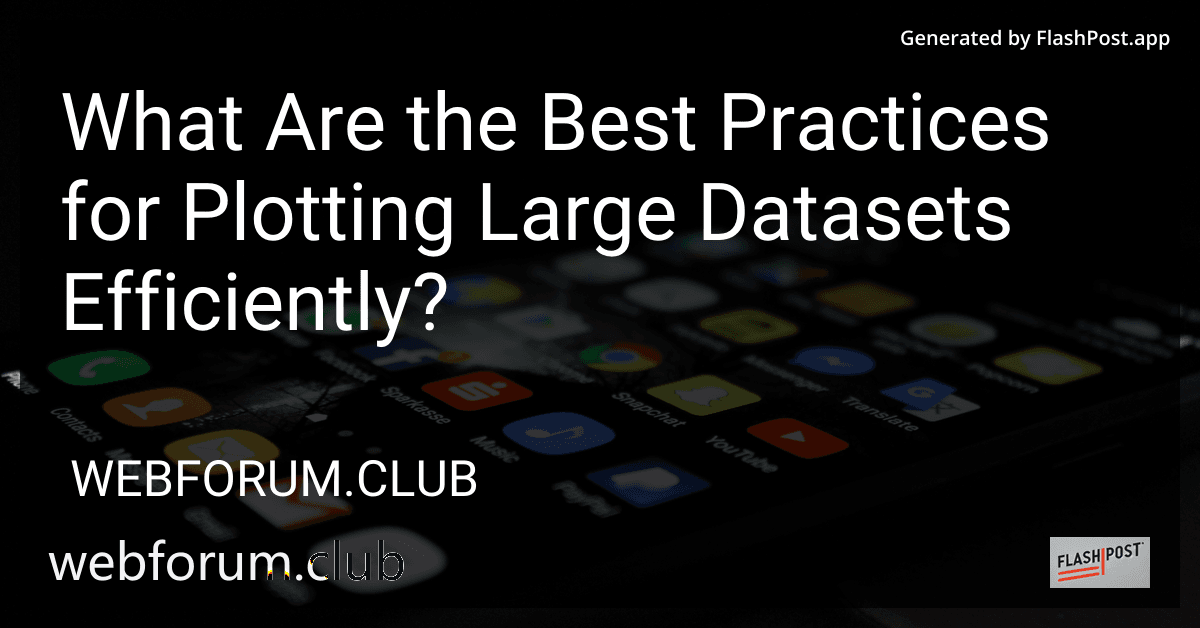Plotting large datasets can be a challenging task, especially if you’re dealing with complex data structures or need to generate visualizations quickly. Efficient plotting not only helps in better visual interpretation of the data but also enhances performance. Here, we delve into the best practices for plotting large datasets that ensure both speed and clarity.
1. Understand Your Data
Before diving into plotting, it’s essential to thoroughly understand your dataset. Knowing the nature, structure, and intricacies of your data will enable you to choose the appropriate plotting techniques. Data exploration can be the first step towards identifying which plots will best represent your information.
2. Use Efficient Libraries
When dealing with large datasets, selecting the right plotting library is crucial. Libraries such as Matplotlib, Seaborn, and Plotly are popular choices. They offer powerful functions that are optimized for performance, allowing you to handle sizable datasets efficiently.
- Explore how to plot DataFrames efficiently using Sympy and Pandas with further insights available here.
3. Optimize Data Preprocessing
Before plotting, preprocess your data to reduce its complexity. Techniques such as aggregation, filtering, and subsetting can minimize the volume of data to be plotted, which significantly speeds up the rendering of plots. Additionally, indexing your DataFrames can improve data retrieval performance.
4. Employ Data Sampling
If your dataset is exceedingly large, consider using data sampling strategies. Random sampling helps maintain the integrity of your dataset while decreasing its size. This technique is particularly effective when you need to generate exploratory plots quickly during initial analysis stages.
5. Use Interactive Plotting Tools
Interactive plotting tools can be incredibly beneficial for large datasets. Tools like Plotly and Bokeh allow you to interact with your data, offering features such as zooming and panning, which are useful for large datasets where you might need to inspect specific sections of the data in detail.
6. Opt for Specialized Plot Types
Different plot types can handle large datasets more effectively than others. For example, hexbin plots or heatmaps are often used for visualizing the density of data points without over-plotting. Consider utilizing matplotlib data plotting techniques for innovative ways to visualize large volumes of data.
7. Parallelize Your Workload
Take advantage of multi-threading or distributed computing environments to parallelize your data processing and plotting tasks. Tools like Dask or Vaex can partition your data and compute in parallel, significantly reducing the time required to load and plot large datasets.
8. Use Data Reduction Techniques
Techniques like Principal Component Analysis (PCA) or t-Distributed Stochastic Neighbor Embedding (t-SNE) can reduce data dimensionality while maintaining essential data characteristics. This preprocessing step can simplify and speed up plotting large datasets.
9. Save Plots Efficiently
When dealing with multiple plots or animations, save your plots in fast-loading image formats such as PNG or SVG. Furthermore, consider using libraries that offer optimized saving functions to further improve efficiency.
Conclusion
Efficiently plotting large datasets requires a combination of understanding your data, choosing appropriate tools, and employing various optimization techniques. By following these best practices, you can ensure that your plots are both informative and generated in a timely manner. For further guidance, check out this data plotting tutorial which gives a step-by-step guide on handling data visualizations efficiently.
By implementing these strategies, you can transform large, unwieldy datasets into insightful and manageable visualizations.
